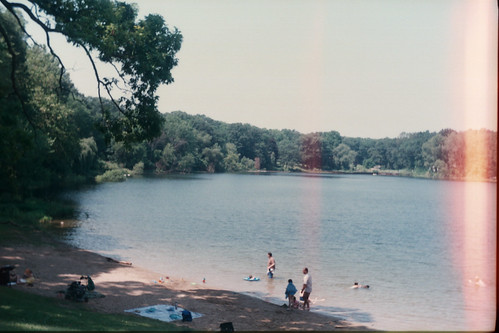Professor Koretsky's main focus of this presentation was three lakes in Michigan where she has been drawing samples from to see the types of chemicals in the lake and if or when the lake would turn over. The lakes are Asylum Lake and Woods Lake that are in Kalamazoo and Brewster Lake that is in an Rural area in Hastings.
| Asylum Lake |
 |
| Woods Lake |
There are a few examples of where the amounts got too high and the lakes ended up really suffering.
- In the 1950's hypoxia hit the Kalamazoo River. Hypoxia happens when the dissolved oxygen content of a body of water is decreased and oxygen dependent organisms die off. This event resulted in a massive fish kill.
- Phosphorus levels were once so high in Lake Erie, it was declared dead in the 1960's. This is why the 1972 Great Lakes Water Quality Agreement was formed.
 |
| This is not an actual picture of the Kalamazoo River but a massive fish kill that happened in a Louisiana Marsh from the same conditions |
Solutions:
- Control residential run off
- Reduce use of phosphorus in fertilizers and detergents
- Control agricultural runoff
- Reduce phosphorus in sewage
- Install fountains in bodies of water.
No comments:
Post a Comment